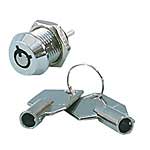Hi Sky120, a pic of the board underside please. B4 I checked ur pic 4 mistakes & quickly thought about SCR damage due 2 the gate's 5V peak voltage limit being exceeded. After a think about (hung over), the ground, or zero volts usually is connected to ur black, neutral or common wire. The "live or active" blue wire, when accidentally connected to the ground rail & ur magneto spun with ur electric drill, sent more than 100VAC unrectified thru it. Change out ur tantalum caps for new ones, or google how to check them with ur multimeter (out of circuit). Hopefully u get it sorted.
Here's a tip for all builders. Print out the layout. When u r constructing, as u add each component to the board, cross it off on ur layout with a backslash right thru the component. Do this with everything, including wires. Now I know when its completed u want to try it on ur bike ASAP.
STOP. Check it right thru again, 1 component at a time against the layout only this time, when u check each component & its correct, cross it off with a forward slash thru the component, which will form an X thru the component. Only when everything, including the blue, black & coil lead have an X thru them on the layout are u good 2 go.
The SCR., all diodes & the 3 tantalum caps MUST go in the right way, as shown. Hope u get it sorted.
Oh, BTW, if u mean u have continuity between the lead where ur CDI connect to ur HT coil & ur motor, its actually a quite low ohms of resistance, which is mormal. I cant remember the exact resistance off the top of my head but I'll check later & get back to. Cheers
Here's a tip for all builders. Print out the layout. When u r constructing, as u add each component to the board, cross it off on ur layout with a backslash right thru the component. Do this with everything, including wires. Now I know when its completed u want to try it on ur bike ASAP.
STOP. Check it right thru again, 1 component at a time against the layout only this time, when u check each component & its correct, cross it off with a forward slash thru the component, which will form an X thru the component. Only when everything, including the blue, black & coil lead have an X thru them on the layout are u good 2 go.
The SCR., all diodes & the 3 tantalum caps MUST go in the right way, as shown. Hope u get it sorted.
Oh, BTW, if u mean u have continuity between the lead where ur CDI connect to ur HT coil & ur motor, its actually a quite low ohms of resistance, which is mormal. I cant remember the exact resistance off the top of my head but I'll check later & get back to. Cheers
Last edited:












